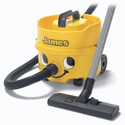|
http://www.fryette.com/power-station-integrated-reactance-amplifier/ Fryette power station is a power amp thats designed for stuff like that.
|
|
|
|

|
| # ? May 23, 2024 08:14 |
|
massive spider posted:http://www.fryette.com/power-station-integrated-reactance-amplifier/ Ooooh cool thanks for that!
|
|
|
|
That thing is really cool, I wonder about the 2 ohms out though, it's printed on the back, but the manual says it only goes down to 4 ohms. Definitely a cool piece of equipment.
|
|
|
|
Apparently it's great for modellers too.
|
|
|
|
massive spider posted:Apparently it's great for modellers too. The Sunn concert slave is also similar and fairly cheap as well. Mine was $175USD. Not as cool as the fryette though.
|
|
|
|
Krustic posted:The Sunn concert slave is also similar and fairly cheap as well. Mine was $175USD. Not as cool as the fryette though. All the Sunn stuff is pretty expensive over here, the doom crowd got a hold of it, and now they're way too much for 35~ year old amps.
|
|
|
|
Question. I just saw a Mesa Boogie Studio .22 + combo. It's in pretty good shape and has the foot-switch included, along with new tubes. Is that guy anywhere near as good as the Mark series?
|
|
|
|
Wark Say posted:Question. I just saw a Mesa Boogie Studio .22 + combo. It's in pretty good shape and has the foot-switch included, along with new tubes. It's similar, but a bit different than a mark. It's a mostly straightforward amplifier, with the exception of the graphic eq.
|
|
|
|
Realised that I've been looking at the wrong manual for my amp and thats why i couldn't make head or tail of it. Twat. Line 6 Spider ii HD75 is not the same as my HD150! Unfortunately it lives in a lockup at the local rehearsal space so me looking at pdf manual a few days before trying it (other guitarist picked it up for me as i had no amp, he uses a big Zoom multi into the clean channel on his one, the same model) led to a bassy mess. It's a bit obtuse with its "secret" functions, especially when i was trying half-remembered wrong ones. I'm using his old Epiphone 4x12, no idea what speakers are in it so don't know if thats a mud factor too? Didn't even know Epiphone made cabs!
|
|
|
|
Bolange posted:So I made the "mistake" of watching some gear videos over the weekend and started GASing pretty hard over those newish Fender Bassbreakers. I, like any man of taste, covet a cranked Plexi tone but there realistically is really no room in my life for a JTM45 that I'll never be able to crank up high enough to hit th sweet spot. Have any of you had a chance to checkout the Bassbreaker 45 watt head/combo? How well does that power scaling knob manage the amp? I'm not looking for a middle-of-the-night amp but just something I can get that cooking power tube sound from at a reasonable (nonpainful, no complaints from the neighbors) volume. My understanding of the way that amp works is that I can dial that knob all the way down to 1 watt to get the driven plexi sound at sub-drummer level. Is that accurate? If not I may have to look at the 15 watt version instead (but I prefer to have something that could handle a small open-air gig). Lots of combos have master volume knobs/channels, i.e. a stage that loads the amp and creates plexi/distortion tone at low volumes. They are pretty expensive of course, but it's not an uncommon feature (and frankly everyone should want it). But yes, that is true, you can get great distortion tones at small volumes out of any of these kind...(tone being still a decisive aspect). I play through an Orange 50 watt rocker verb III and also have a mesa boogie roadster rectifier...but many many amps now have master volume setups, and frankly EVERY amp should. I think even the newer vox's do
|
|
|
|
I'm not sure I'd go that far. Any master volume is going to present a load to the preceding stage, and despite the utility that might come with the master volume, they're not without some drawbacks, such as being less dynamic. Of course, and to your point, most people would rather have the functionality of the master volume, irrespective of the tonal differences, and that's up to them.
|
|
|
|
You can also install a defeatable MV circuit. Ultimately I think it's like a 1M load on the circuit so it probably won't affect tone too much if it's cranked all the way. I have a VHT Ultra 6 Special with a power soak built in which is the other option but holy hell that thing sucks up high end. It also affects how much headroom the amp has available so it's not always suitable for pedals. There are also options for bright caps (not a fan but if voiced properly they can be alright; if voiced poorly they turn the amp into a trebly mess), putting the master volume after the phase inverter (basically a compromise between attenuation and a master volume) and, uh, other stuff that I'm blanking on right now. But the point is that none of this stuff is inherently expensive and there are lots and lots of options for taming a big amp without external equipment. But what were we talking about again? Pokey Araya posted:All the Sunn stuff is pretty expensive over here, the doom crowd got a hold of it, and now they're way too much for 35~ year old amps. The big thing with vintage amps is that besides voodoo concerning mojo and other unquantifiable poo poo, they tend to have more robust transformers than modern production amps. Most of them are point to point as well which makes them easier to service and modify. I don't think anyone should pay $3000 for a Model T (which is a Marshall pre attached to an ultralinear KT88 power amp and if you know how to look you can basically run a slaved setup for less than $500 that will sound just like it, hint hint it's Dynaco) but I understand wanting to have a vintage amp that was overbuilt and capable of monster sound. Plus, it's really neat. That all being said I just traded a '65 Bandmaster for a JSX (  ) head so there is something to be said for new(ish) poo poo ) head so there is something to be said for new(ish) poo pooE: whoa that was a lot of words
|
|
|
|
Post-phase inverter master volume, particularly with the cap sandwich, is all the rage, but I've recently decided to try something different, something that Mojave pioneered (as far as I know, at least), and described in one of Blencowe's books. Basically it's a variable bias to the long-tailed pair phase inverter. The downside is that you have DC on the pot, though it's not too considerable, but the upshot is that you can bias the phase inverter hot or cold, without presenting an additional load or path to ground, like you would with a PPIMV. This is going to be the first combo I've done, so I've also taken the opportunity to design a circuit with the famed 5F6 DC coupled cathode follower to drive the tone stack, and a medium spring accutronics tank driven out of a ganged 12AT7, similar to a super reverb. Should be pretty cool, I hope. Going to do a three-way pentode / ultralinear pentode / triode switchable power section with a pair of cathode biased EL84s and a hammond UL transformer that I've had pretty good luck with in the past.
|
|
|
|
Declan MacManus posted:I understand wanting to have a vintage amp that was overbuilt and capable of monster sound. Plus, it's really neat. That's pretty much where I'm at. Amps are cool. I'm not much of a fan of master volumes. I have one in a Marshall JMP 2204, but I leave it maxed and use the gain for volume. Preamp distortion isn't really my thing, with the exception of Engl and Laney. Otherwise, I tend to prefer amps without a master. I got my start on this road when I lent a Fender (kind of a Super Reverbish thing) to a guy for a gig and saw that he turned the volume all the way up on it and fed it very little guitar volume. Sounded much better than I ever did. From then on I started turning the amp volume (master or otherwise) up to where it sounds best to me, which is not always 10, then control actual volume with a volume pedal.
|
|
|
|
So my Hughes and Kettner Attax 80 combo died a little while ago and I was looking at a Peavey ValveKing or a Blackstar HT5R as a replacement. That is, until I found a great deal on a HK Tubemeister 18 Twelve combo. I'm pretty stoked. I can't wait until it gets here.
|
|
|
|
DUDES HELP: I record in Logic X - and while I've used some presets, I've never used the amp modeler raw. I've been looking at Amplitube stuff as well for plugins. Is the amplitube 4 tone really much better than the logic amp modeler? For reference, I'm looking for mid to heavy gain sounds. Live I play through an orange half stack (rocker verb III - but never really on the full on metal scooped mids poo poo) or a mesa boogie dual rectifier combo. thanks
|
|
|
|
Mr. WTF posted:DUDES HELP: I've heard really good things about amplitube, but since you already have a really nice head I'm wondering if you can't still use it. The rockverb iiis have a line out, don't they? If you've got a rectifier with a slave out, that will definitely work. I'm having a lot of luck with reamping with the direct output of my amp head, and then using cabinet impulses afterwards. Several attenuators and load boxes will give you similar functionality. You can probably also record the "send" from the effects loop if you don't have a dedicated line out, but that won't give you any of the tone shaping your power amp gives you. e: note that i am NOT saying to plug your head directly into your audio interface. You will destroy the head, the interface, and maybe find a cool way too electrocute something else, just to be clear. You're looking for an output that's separate from the speaker outputs (which will still need to be connected while you reamp) or the effects loop. Octatonic fucked around with this message at 22:38 on Aug 31, 2016 |
|
|
|
Octatonic posted:I've heard really good things about amplitube, but since you already have a really nice head I'm wondering if you can't still use it. The rockverb iiis have a line out, don't they? If you've got a rectifier with a slave out, that will definitely work. I'm having a lot of luck with reamping with the direct output of my amp head, and then using cabinet impulses afterwards. Several attenuators and load boxes will give you similar functionality. You can probably also record the "send" from the effects loop if you don't have a dedicated line out, but that won't give you any of the tone shaping your power amp gives you. To be honest I've never tried the line outs - they used to suck - be completely different than the sound you get/want from the amp just operating regularly. I will try though if you've had some good experience. I've never tried it on either amp though - my experience is dated from old (similar) heads...
|
|
|
|
The key with the line outs is that they are just the sound that the amplifier itself makes. A whole loving ton of guitar tone comes from the speakers as well, which shape the mess that the amplifier makes into something pleasant. After you record the direct out of the head, you need to plug them into cabinet simulators. Red Wire has a really quite nice set of 1960a impulses that you can download for free. You can load them into any convolution reverb plug-in, including p legit freeware products NadIR and LeCab e: so your signal chain looks this: Direct Out from Head Cab Simulator/Impulse Response Post eq Post effects Octatonic fucked around with this message at 22:50 on Aug 31, 2016 |
|
|
|
And this is where an Emulated Out comes in, they try to emulate the speaker stage. My Blackstar has one and it does do a remarkable job. It's sounds like it should and you have a little button to choose between a 2 x 12 or 4 x 12 emulation
|
|
|
|
peter gabriel posted:And this is where an Emulated Out comes in, they try to emulate the speaker stage. My Blackstar has one and it does do a remarkable job. It's sounds like it should and you have a little button to choose between a 2 x 12 or 4 x 12 emulation That button should have a lot of dust on it...(the 2x12 never being selected)
|
|
|
|
Octatonic posted:I've heard really good things about amplitube, but since you already have a really nice head I'm wondering if you can't still use it. The rockverb iiis have a line out, don't they? If you've got a rectifier with a slave out, that will definitely work. I'm having a lot of luck with reamping with the direct output of my amp head, and then using cabinet impulses afterwards. Several attenuators and load boxes will give you similar functionality. You can probably also record the "send" from the effects loop if you don't have a dedicated line out, but that won't give you any of the tone shaping your power amp gives you. yeah I get the line out vs. speaker out...important disclaimer...
|
|
|
|
Mr. WTF posted:yeah I get the line out vs. speaker out...important disclaimer... I was confident you probably did, but I felt like it was necessary to say, for some hypothetical lurker out there somewhere, reading the deadest subforum of the dead comedy forums. Anyway, tube amps are great, cabinet impulse responses are great, I hope you can get the sound you're looking for!
|
|
|
|
Mr. WTF posted:That button should have a lot of dust on it...(the 2x12 never being selected) Hell yes! It does make it sound fuller, Blackstar get good reviews for their emulated outs, they are very good.
|
|
|
|
Just finished building my first tube amp. Mojotone Tweed Champ - I heard it was an easy start and recommended by the Chicago School of Guitarmaking as a good beginner's tube combo to build. Still dealing with a bit of hum, but the removable back panel is unshielded, so I figure that'll take some of the hum out. If not, then debugging is in order. Now, onto the next build - working with a friend to help him build an 18W Marshall clone. It was really helpful to remind myself how to work with circuit diagrams and solder, so this should be a fun little project, plus now I've got a small amp for practice.
|
|
|
|
Hedningen posted:Just finished building my first tube amp. Mojotone Tweed Champ - I heard it was an easy start and recommended by the Chicago School of Guitarmaking as a good beginner's tube combo to build. Still dealing with a bit of hum, but the removable back panel is unshielded, so I figure that'll take some of the hum out. If not, then debugging is in order. Not sure about the Mojotone directions, but make sure you scraped down a tiny bit of powder coating or whatever it is on the back of the pots before you soldered. Pots nowadays have a coating on them that you can sort of get solder to stick to but it won't actually be a good connection and makes for hum since the ground connection is lovely to nonexistent.
|
|
|
|
I also built that Mojotone tweed champ, years ago, and, honestly, their grounding design leaves a little bit to be desired. Because the tweed is so small, I'd just star ground everything to the ground lug where you terminate the ground coming from the power cord. It'll be a bit busier, but it'll likely sound better than the chassis grounds. In my more recent builds, I've taken a 14" piece of tinned copper and suspended it on mounting lugs next to the turret board, and ground everything in the chassis to that ground bus. Makes a big difference.
|
|
|
|
I was hoping to get some help with this, but I'm relatively new to amps and such so forgive me if my terminology and descriptions are off. So I use an Orange Rockerverb MKIII as my amp for playing stoner/doom type stuff. I have a pedal called Acapulco Gold, which is a one-knob pedal that imitates the sound of a cranked Sunn Model T. I often will turn up the gain all the way on the Orange and then also turn up the pedal all the way, which leads to a tone that I really like. My problem is even if all the strings are muted I still get so much distortion and the overall sound is just incredibly muddy. I can turn down the gain or the pedal which will clean it up, but then I don't get the tone I like and even then I still get noise coming from my amp. The only time I can mute the strings and the amp is silent is if I switch off the pedal completely. Does anyone know how to fix this?
|
|
|
|
Maybe try the x-setup with a boss NS-2? You can probably get one from Sweetwater or similar and just return it if it doesn't solve the problem.
|
|
|
|
Kvlt! posted:I was hoping to get some help with this, but I'm relatively new to amps and such so forgive me if my terminology and descriptions are off. The best possible fix for this is for you to put two noise gates in your chain. One between your guitar and amp, then one between your preamp and poweramp, if your amp has an effects loop. First, unplug your guitar and instrument cable from the amp completely, then dial in your effects loop noise gate appropriately. Next, disengage the effects loop noise gate and now dial in the noise gate between your guitar and amp. After that one is setup, turn them both on. Profit! If you can only add one noise gate, put it between your guitar and amp. GreatGreen fucked around with this message at 21:38 on Sep 14, 2016 |
|
|
|
Thank you both for the help!
|
|
|
|
GreatGreen posted:The best possible fix for this is for you to put two noise gates in your chain. One between your guitar and amp, then one between your preamp and poweramp, if your amp has an effects loop. Building on this the ISP Decimator G-String can link two pedals together. So basically if the front pedal mutes (From the clean signal) so does the one in the loop. So you just need to get the muting on the front pedal right. No idea how much they cost, though apparently they're awesome.
|
|
|
|
syntaxfunction posted:Building on this the ISP Decimator G-String can link two pedals together. So basically if the front pedal mutes (From the clean signal) so does the one in the loop. So you just need to get the muting on the front pedal right. No idea how much they cost, though apparently they're awesome. I've heard good things about these pedals as well. From what I've read, they employ two types of signal processing. One is a regular noise gate like you'd expect, it mutes everything until the input hits a certain volume then everything goes through, as well as a dynamic low pass filter. What that means is that not only does the regular gate work but it will also mute all frequencies that are higher than what your guitar is outputting, so all the high frequency noisy hiss is eliminated, but apparently it's tuned so there's no signal degradation to your guitar. I've never used one though so I can't tell you how well it works, but it the tech does sound pretty effective and it gets really good reviews basically everywhere.
|
|
|
|
quote:Captain Apollo Okay can somebody take a look at the Bassbreaker 18/30 specs and tell me if that is "more appropriate" for gigs? Maybe even anecdotal experience?
|
|
|
|
Valve amps can vary in volume but I'd stick my neck on the line and say the 30 watt will be fine. I use a 60 watt and the volume never goes above 3 for rehearsals, and when using my 50 watt it's on about 5 or so. AC30s for example are loving LOUD, like, too loud (the old ones with no master volume are borderline unusable to me).
|
|
|
|
Loudness is a really, really difficult thing to qualify, because there are simply too many variables at play- guitar frequency response, amplifier voicing, tube harmonic generation, transformer saturation, speaker response and efficiency, and finally the equal loudness contours of human hearing. If you try and figure this stuff out, I find you quickly lose your mind. That said, the celestions they put in the bassbreakers are pretty efficient (98db), so I imagine the bassbreaker 18/30 would be fine, particularly if you like the 15 already. Alternatively, swap the v-type out for a vintage 30, which is 2db more efficient.
|
|
|
|
Yeah, there's basically no standard for amp wattage measurements at all, and most manufacturers cheat anyway and use the most forgiving "loudest amplitude the amp can reproduce a 1kHz sine wave before reaching .001% total harmonic distortion" metric or something like that. Everybody says "tube watts are louder than solid state watts" but that's not true. A watt is a watt is a watt, in any context. The misunderstanding is that watts are usually a measurement of how loud an amp will get before it distorts... but tube amps are intentionally meant to be driven way past the threshold of distortion, while solid state amps aren't. So, a 30 watt tube amp could easily be designed to actually produce 60 or 70 watts, but only 30 of those watts will be clean so it will be officially rated at 30 watts, while actually being able to produce something like 60-70 watts, but at those levels the signal will be extremely distorted. And that's only at 1kHz. It might only be capable of producing a low frequency like 80Hz at 15-20 watts or something like that. Basically, only use wattage as the loosest guideline for how well an amp might be able to compete with a drummer or if it's a tube amp whose tone comes from poweramp distortion, how loud you'll have to crank it before it starts sounding its best. GreatGreen fucked around with this message at 17:01 on Sep 15, 2016 |
|
|
|
jwh posted:Loudness is a really, really difficult thing to qualify, because there are simply too many variables at play- guitar frequency response, amplifier voicing, tube harmonic generation, transformer saturation, speaker response and efficiency, and finally the equal loudness contours of human hearing. If you try and figure this stuff out, I find you quickly lose your mind. Ehhhhhhhh, it's not actually that hard, there's tons of sound quality standards out there for it. One of the most common is ISO 532B diffuse field loudness measured in sones, but you typically won't find software that can calculate those kinds of psychoacoustic metrics outside of a laboratory setting. Most people just stick with A-weighted dB, which doesn't do that great a job of measuring perceived loudness, but is really easy to calculate. Of course what I mean above is that all this is relatively easy to calculate from a microphone at your measurement location. If you're trying to figure it out analytically beforehand, lol, good loving luck with that. We can't even predict the frequency response of nominally identical guitars thanks to variations in the wood. This is also why anyone who tells you that tonewood is a thing is just drinking the kool-aid. There's considerably more variation in wood samples in a single given species, than there is between the species commonly used for body/neck/fingerboards.
|
|
|
|
Yeah if you could get the industry to just take a measured response from a standard mic at standard distance across range of frequencies you'd have a good but hard to use thing because it would be a graph. And graphs aren't rock man (I would love such a graph to be standard tho)
|
|
|
|

|
| # ? May 23, 2024 08:14 |
|
Captain Apollo posted:Okay can somebody take a look at the Bassbreaker 18/30 specs and tell me if that is "more appropriate" for gigs? IDK if anyone has really answered the question or not, because the answer is "it depends". Basically: if your guitar is getting miced up, and you trust in your monitoring, then the only thing that matters is if you can get the sound you want/hear yourself at rehearsals. This has a lot to do, tbh, with the band you're playing in. I've played in a classic rock inspired indie outfit where the lead singer's blues jr (15 watts) was all she needed or would ever need, and I've played in prog metal bands where I needed most of the clean headroom of a 100 watt amp in order to stay tight and loud enough. You said in the bit you quoted that you've played with a drummer and a bassist a bit? Here's an inventory to take, IMO before you spend the money. Is everyone able to hear me? Am I getting the tone I want, or do I have to crank the volume so much that it's changing in a way I don't like? Do I use the effects loop of my amp? Is my sound a power amp distortion sound? I would stick with the 15 if your sound is mostly about power amp distortion, or if you need your effects loop, because as far as I'm able to see, it's the only model that has one. However, if you need more clean headroom, the bigger amp will probably be better. If the issue is hearing yourself (but the band can hear you) I would suggest you consider a tiltback amp stand, to direct more noise at your head. If no one can hear you, or you want to push more air, either get the bigger combo amp, or an extension cabinet. Regardless of what you end up with though, have fun and wear earplugs.
|
|
|






















